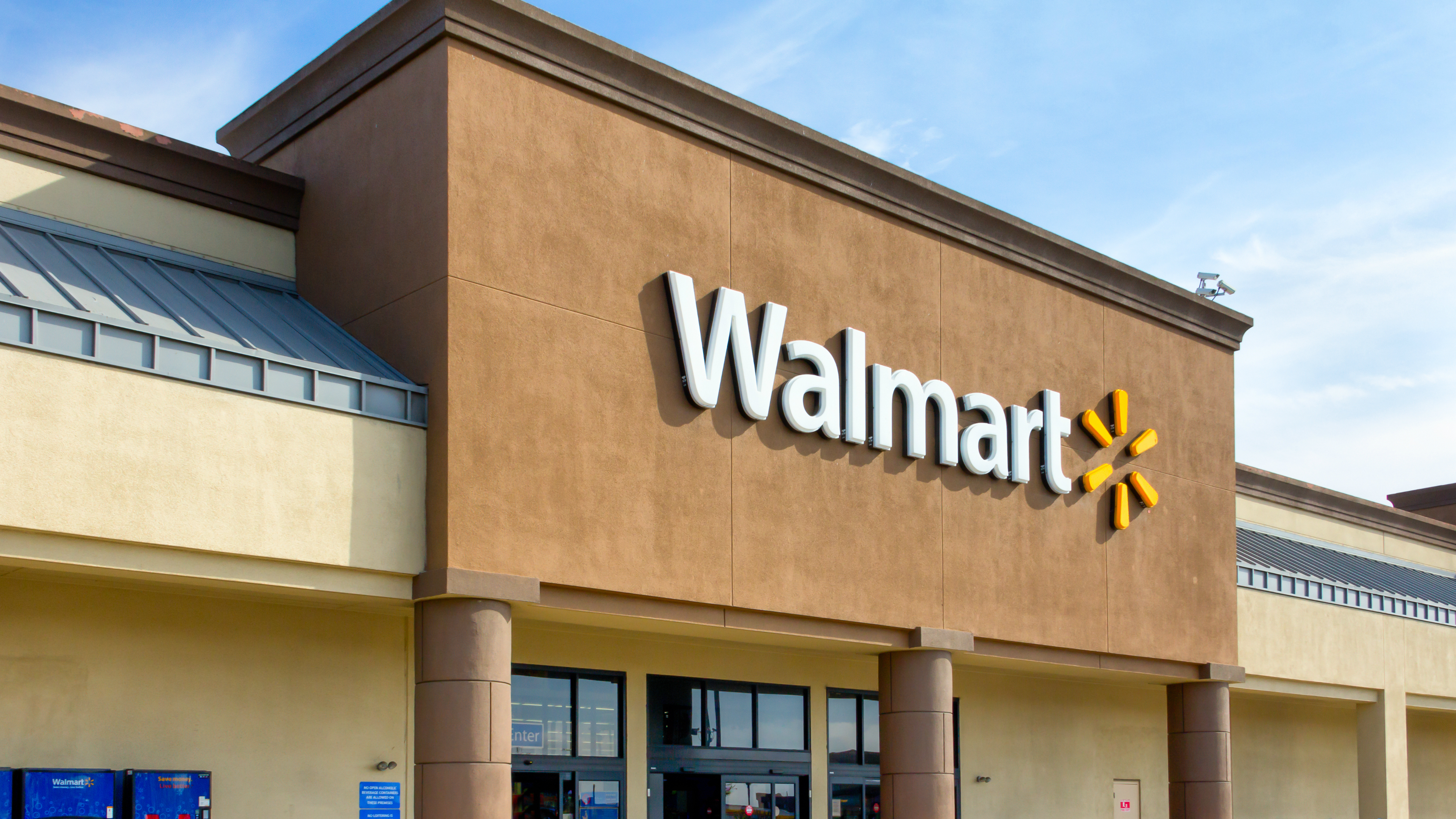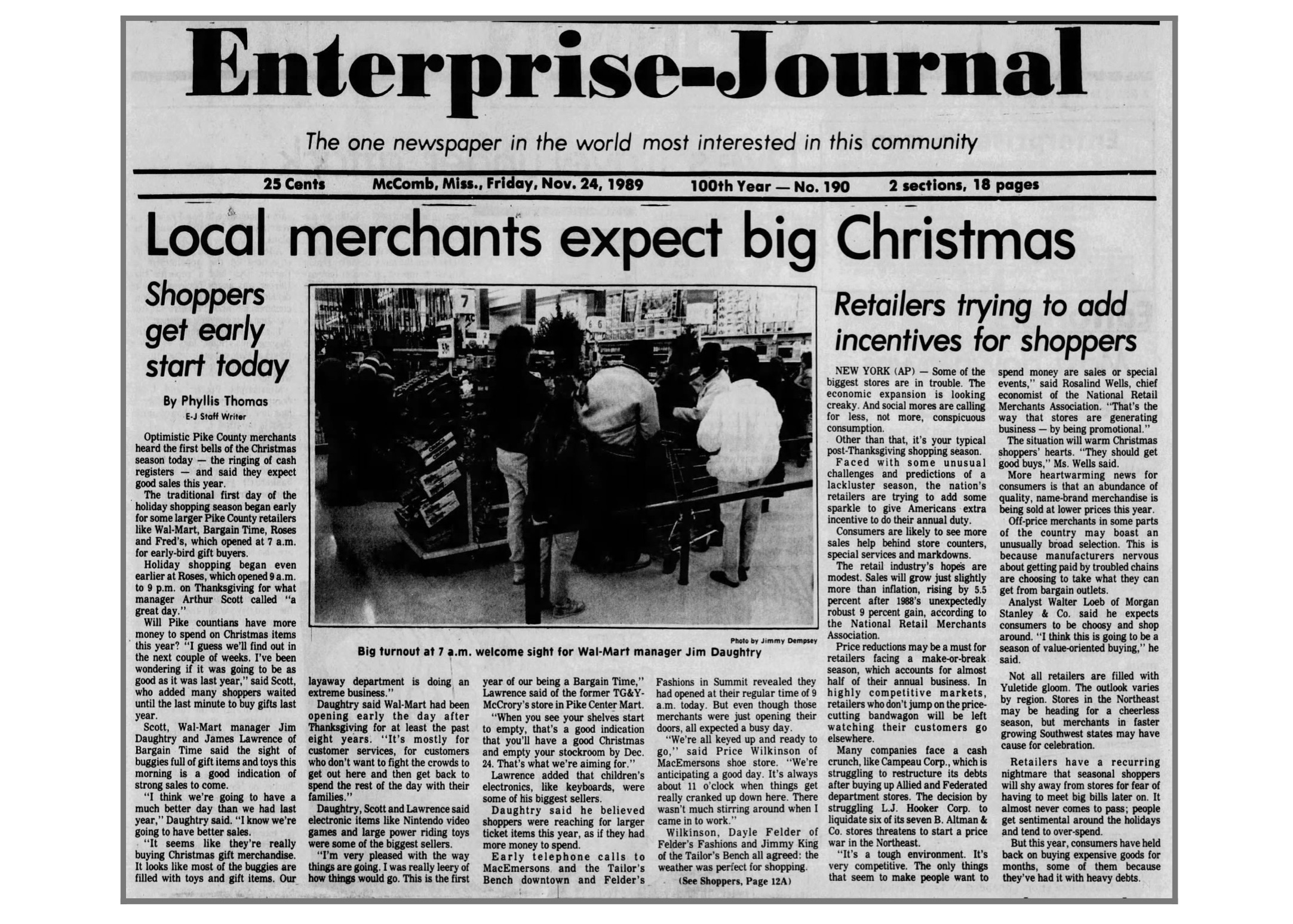What was Walmart's Black Friday like more than 30 years ago?
The annual retail frenzy hasn’t always felt like the apocalypse

Ahead of Walmart Black Friday 2020 and the overall rush of Black Friday 2020 deals, we're republishing this 2019 piece on Walmart's history during the sales event. This year, deals will be staggered over three different periods beginning on November 4 with a focus on online shopping, which should help avoid some of the subjects discussed below.
On November 25, 2011, disaster struck. Or, at least something very akin to it in the retail world. US retail behemoth Walmart found its website crumbling under pressure as it ushered in one of the country’s biggest shopping days of the year. Disgruntled online shoppers found their carts empty, the website crippled and the login page not working, causing many to lose out on what probably felt to them like deals of a lifetime.
It wasn’t the first time Walmart’s website crashed, however. And, it’s common knowledge that this wasn’t the worst Walmart Black Friday problem... and not even the biggest issue for the brand period.
In fact, that same day in 2011, a mother – with her two kids in tow, we might add – pepper sprayed at least 20 fellow shoppers at a Los Angeles Walmart, a woman was almost crushed to death at a Mesquite Walmart, and a man was shot by armed robbers outside its Northern California location.
The maniacal, bloodthirsty frenzied madness that is the day after Thanksgiving has become notoriously dangerous over the last decade, and Walmart seems to have become its epicenter. Full-on fist fights break out over appliances and video game consoles, as do in-store traffic jams and violent confrontations with the police.
Employees do what they can to control the chaos, but even they get caught in the crossfire. In 2018, a Walmart employee was hit with a rack after a fight broke out over a TV. A decade before in 2008, a Walmart temp was actually trampled to death by shoppers.

How exactly did Walmart handle all that Black Friday craze in the ‘80s, prior to the Internet, sales tracking apps and its newly-launched Check Out with Me service?
Well, for one, Black Friday hasn’t always been this insane. In its early days, the shopping tradition was a well-ordered, much tamer and more relaxed affair. In fact, 30 years ago, in 1989, even with Walmart becoming the first retailer in history to report after-tax profits of $1 billion, its shoppers’ biggest problem on Black Friday was probably finding a spot to park.
- Here are the best Black Friday laptop deals this 2019
- In 2019, the Walmart Black Friday looks much different
- Walmart has the Apple Watch Series 3 on sale

A quick history
By its early days, we mean the good old ‘80s, of course. While the 1980s saw the US economy go through a recession, it also experienced a period of economic growth that lasted through the early 1990s. So, even though Black Friday still wasn’t as massive a retail event then as it is now, it isn’t surprising that it was during the decade of big perms and spandex that the day after Thanksgiving started to become America’s biggest shopping holiday.
The term “Black Friday” hasn’t always been synonymous with holiday shopping sprees and massive deals, however. For quite some time, the term we all now associate with consumerism at its peak used to refer to the gold market collapse of 1869 – triggered by two Wall Street hotshots buying lots of gold in an effort to artificially drive up its price.

When exactly the term Black Friday become associated with the day after Thanksgiving, we’re not quite sure. However, History.com says that the police originally used it to refer to the “hordes of suburban shoppers and tourists flooded into the city in advance of the big Army-Navy football game held on that Saturday every year.” Uniontown, PA’s The Morning Herald echoed this a couple decades later, reporting that big city cab and bus drivers used the term to describe the day that signaled the start of the Christmas shopping rush.


Still, even in the ‘80s, the term “Black Friday” wasn’t widely used by retailers and consumers outside of Pennsylvania. To most of the US, it was still the “day after Thanksgiving.” One thing we do know, however, is that Walmart was already partaking in the tradition, enticing early shoppers with incentives.

It was all very civilized
Back to our original point, the Black Friday we’ve come to know and accept hasn’t always been like that. While horror stories of stampedes and department store brawls have turned many people to online shopping and Cyber Monday, 30 or so years ago, Black Friday was a less frenetic affair.
Some things were the same, of course. Back in 1989, lines too were formed at the door well before they were thrown open. Stores were filled wall-to-wall with people as well. And, Walmart’s fastest selling items were also consumer electronics, video games and TVs, with Nintendo leading the charge.
However, people also weren’t getting elbowed and shoved over Nintendo games or that year’s hottest kids’ toy. In the ‘80s, Black Fridays were more civilized, with Walmart even treating its early bird shoppers to poinsettias, free coffee and doughnuts, as well as electronics giveaways and Friday morning specials.
There were also key differences in the way retail stores did things back then. For one, Walmart didn’t start opening on Thanksgiving Day until 2011. Thirty or so years ago, it accommodated Black Friday shoppers by offering longer hours only on the day of, typically from 7 am through 10 pm instead of the usual 9 to 9. Lines were formed before 7 am, but people weren’t camped out days or even a week before, so they weren’t sleep deprived while doing their holiday shopping. And, well-rested shoppers are typically conducive to a more relaxed atmosphere, which made Black Fridays back then more manageable for big retailers like Walmart.
In addition, doorbuster deals were not that common. These days, big ticket items in very limited supply are now very much part of the tradition, but these also bring out peoples’ competitive nature as well as put them under a lot of pressure. Plus, modern Black Friday shoppers tend to just grab whatever’s within reach for fear of missing out on good deals, and just decide right before checkout whether they want the individual items in their cart or not. Back in the ‘80s, neither of these were a big thing, so shoppers were less competitive in general and more relaxed.

In other words, Black Fridays back then, even at Walmart locations, were a lot more controllable and simpler. All Walmart needed to do to ensure that it’s covered for the year’s biggest retail day was to put out good bargains, offer a couple special services, bring in 20 or so holiday temp workers and put out plenty of merchandise to go around. There were no website crashes to deal with or over-enthusiastic customers to pull apart.

As one Associated Press journalist wrote after doing a four-hour stint behind the counter at a department store on a Black Friday, most shoppers she assisted were nice, though there were definitely a handful “who made me finally understand why it’s hard to be the always polite, smiling sales clerk.” By those, she meant a mother who ignored her 8-year-old kid as she wandered behind the counter, a customer who asked to see every style PopSwatch they had available only to not buy anything, and “the dozens buying gifts who didn’t really know what the receiver would like.”
They’re annoying, sure, but they’re are definitely far from all-out brawls, don’t you think?
- These are the best Black Friday laptop deals from Walmart
Sign up for breaking news, reviews, opinion, top tech deals, and more.

Michelle Rae Uy is the former Computing Reviews and Buying Guides Editor at TechRadar. She's a Los Angeles-based tech, travel and lifestyle writer covering a wide range of topics, from computing to the latest in green commutes to the best hiking trails. She's an ambivert who enjoys communing with nature and traveling for months at a time just as much as watching movies and playing sim games at home. That also means that she has a lot more avenues to explore in terms of understanding how tech can improve the different aspects of our lives.